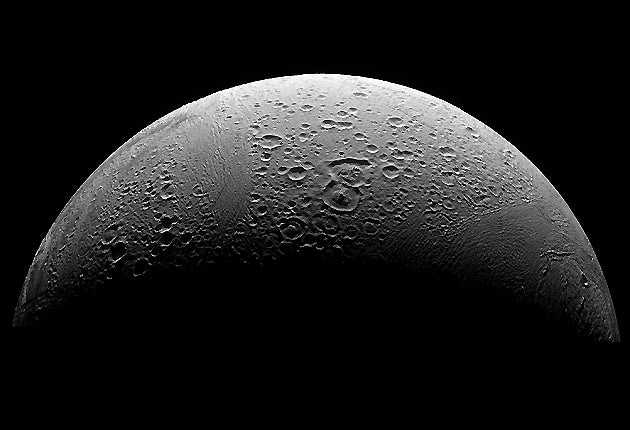‘Organic molecules’ spotted coming out of nearby world that astronomers think could be home to life
Saturn’s moon Enceladus appears even more hospitable after scientists re-examined old data

Even more organic molecules have been found coming out of Saturn’s moon Enceladus, scientists have said.
Enceladus is already one of the most promising locations for potential life in our own solar system. The icy world is active, might have the right temperatures for life as well as having large oceans under its surface.
Recent studies of the distant world have given more hope that Enceladus could be habitable. And now scientists re-examining one of those studies say that it looks even more like a potential home for life than previously thought.
The plumes coming out of the surface include organic molecules such as methanol, ethane, and oxygen, the new study suggests.
Astronomers made the discovery after re-examining data taken from Nasa’s Cassini spacecraft, which flew past the moon in 2011 and 2012. Those initial examinations showed there was water, carbon dioxide, methane, ammonia, and molecular hydrogen in samples taken from those plumes.
Now Nasa researchers have looked once more at that data, comparing it to a large library of other similar samples. They found that not only did the plumes have those five chemicals, it also included a range of other molecules.
When combined with other research, the new findings suggest that the world could potentially already support alien life, or at least have the processes that could lead life to begin.
The findings are reported in a new paper, ‘Detection of HCN and diverse redox chemistry in the plume of Enceladus’, published in the journal Nature Astronomy.
The Cassini spacecraft set off from Earth in 1997. It was primarily pointed at Saturn, but also looked at rings and moons that surround it in a large and complex system, studying them in detail until it was crashed into the planet in 2017.
Enceladus remains one of the most intriguing worlds in our solar system, in part because of the findings of that research. It is also relatively easy to study because of plumes that erupt through its icy surface, shooting out material from beneath so that it can be studied by spacecraft as they fly past.
In recent years, a number of studies have found that Enceladus has many of the conditions and materials thought to be necessary for life on the planet. Earlier this year, for instance, scientists reported that they had found phosphates on Enceladus – another finding that boosted hopes that it could be inhabited.
Subscribe to Independent Premium to bookmark this article
Want to bookmark your favourite articles and stories to read or reference later? Start your Independent Premium subscription today.

Join our commenting forum
Join thought-provoking conversations, follow other Independent readers and see their replies